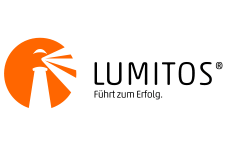Um alle Funktionen dieser Seite zu nutzen, aktivieren Sie bitte die Cookies in Ihrem Browser.
my.bionity.com
Mit einem my.bionity.com-Account haben Sie immer alles im Überblick - und können sich Ihre eigene Website und Ihren individuellen Newsletter konfigurieren.
- Meine Merkliste
- Meine gespeicherte Suche
- Meine gespeicherten Themen
- Meine Newsletter
207 Infografiken
rss| Sie können Ihre Recherche weiter verfeinern. Wählen Sie aus dem linken Bereich passende Suchfilter aus, um Ihre Ergebnisse gezielt einzugrenzen. |
You may have read in the news over the past few days about the passing of Carl Djerassi, the chemist (and later, novelist) who is best known for his discovery of the first oral contraceptive. Thisdiscovery led to something of a social revolution, putting the power of contraception firmly in the ...
Die Proteine, aus denen sich lebende Organismen zusammensetzen, sind riesige Moleküle, aber sie bestehen aus kleineren Bausteinen, den so genannten Aminosäuren. In der Natur gibt es über 500 Aminosäuren, von denen der menschliche genetische Code jedoch nur für 20 direkt kodiert. Jedes Protein in ...
A bit of a chemistry/biology tie in today with a series of posters looking at the chemical structures of some of the main neurotransmitters in the brain. I’ve also included a little information on the main effects and roles of each underneath the structures – however, I’d hasten to add that, ...
Science Hits the Bar
Here’s the second in the series of graphics I’ve produced for my Pint of Science event at La Raza Cambridge (UK) in a few weeks’ time. Today’s graphic looks at how chemistry can help to make caviar and spheres in cocktails, and the chemical agents used to do it.
Science Hits the Bar
Making jelly is something a large number of us have probably done before – however, making it from cocktails is much more fun! To do it, all you need is a gelling agent, heat, and a fridge. There are a number of gelling agents you can use, and which you plump for will depend on the properties you ...
A functional group in chemistry is the part of the molecule that gives it its particular reactivity; simple molecules that contain the same functional group in their structure can be expected to react in similar ways. More complicated chemical molecules may contain more than one functional group ...
With it being half term here in the UK, what better use of sudden vast amounts of free time could there be than making an organic chemistry reaction map? This graphic looks at simple interconversions between common functional groups in organic chemistry. I’m not going to pretend it’s ...
Back to basics with today’s graphic, with a look at the different ways compounds in organic chemistry can be represented. Obviously, if you’re a chemist, these will all be second nature, but as was quite fairly pointed out with regards to the food chemistry graphics, if you’re not well versed in ...
Here’s a reaction map looking at reactions that allow you to vary the substituents on a benzene ring. This was a far larger undertaking than expected; the bulk of the work on the organic reaction map was done in the space of a day, whereas this one is probably pushing towards three days – suffice ...
In der organischen Chemie sind Isomere Moleküle mit der gleichen Summenformel (d.h. der gleichen Anzahl von Atomen pro Element), aber unterschiedlichen strukturellen oder räumlichen Anordnungen der Atome innerhalb des Moleküls. Der Grund für die enorme Anzahl an organischen Verbindungen - mehr ...
Sie erhalten passend zu Ihrer Suche die neusten Suchergebnisse per E-Mail. Dieser Service ist für Sie kostenlos und kann jederzeit abbestellt werden.













